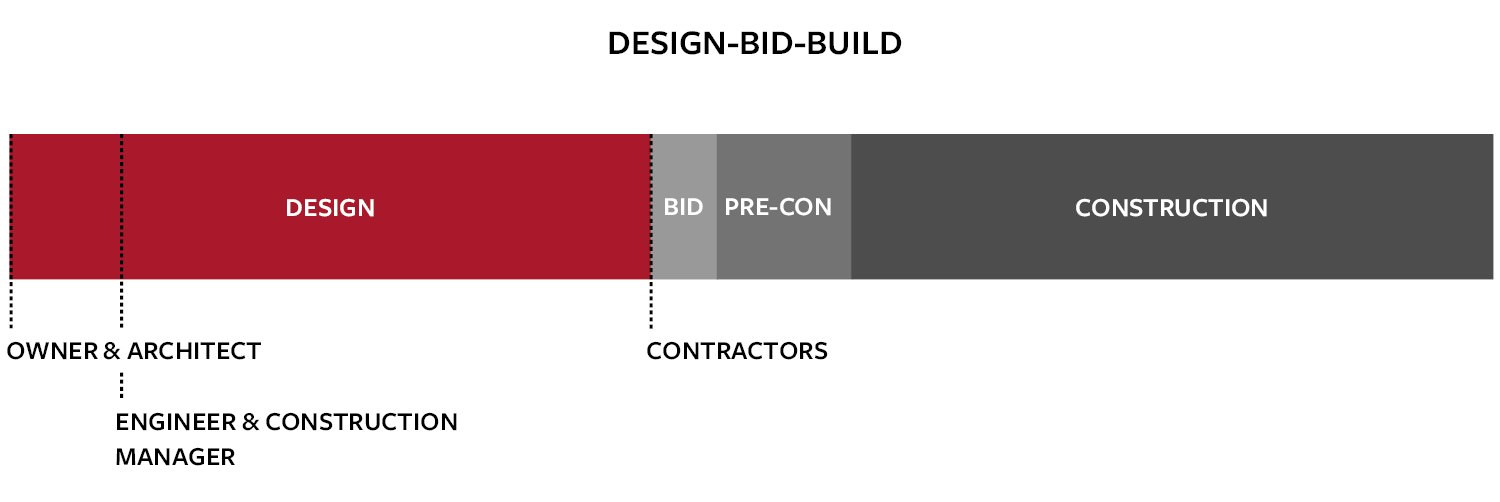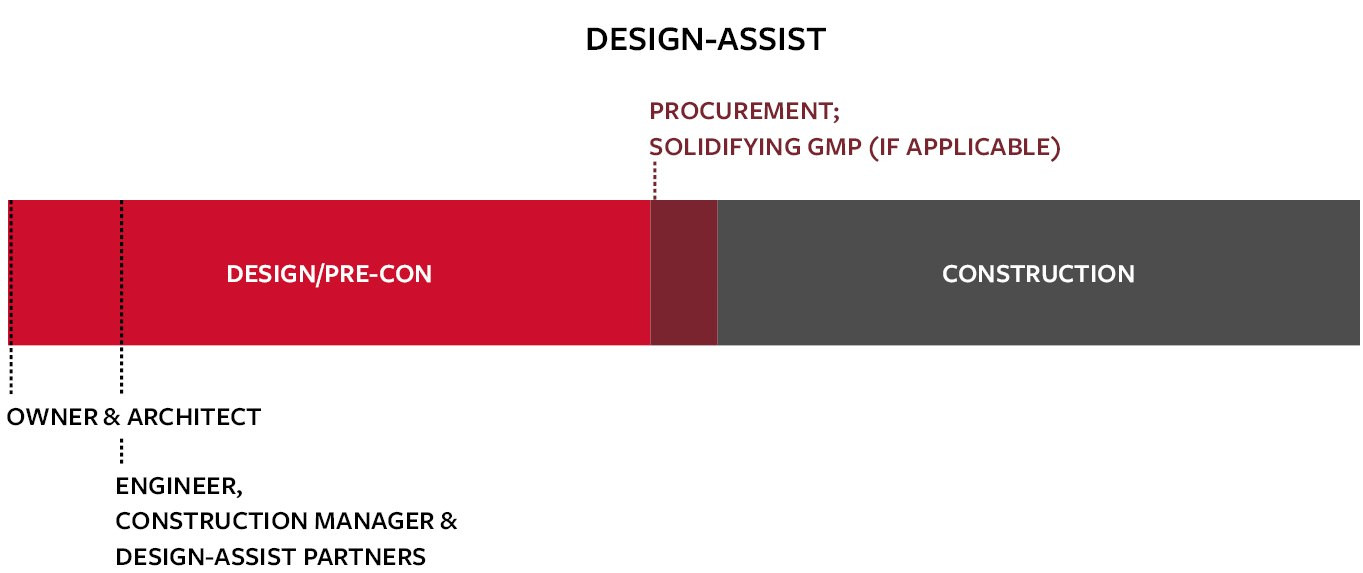What Is Design-Assist?
By Rocco Gallo | Jan 18, 2018

Think of a construction project that’s gone absolutely wrong.
Let’s say an owner undertakes a substantial renovation of their existing facility. The design team performs their fieldwork and completes the design. Then, during construction, the contractors keep discovering all the sins of the past, hidden behind walls and above ceilings. The costs grow, and the schedule keeps getting pushed back. The project has change order after change order. The occupants are continually disrupted. The final E&O is astronomical.
On another project, a facility addition, the design team gets to work with the owner’s scope requirements. They create plans that match the owner’s vision…but after bidding, everyone learns that the project is 25% over budget. The owner isn’t going to be able to get more funding, so the team goes through extensive value engineering exercises. The owner builds the project, but they’re disappointed in the process and the results.
I’ve worked on projects that have gone like this, and heard about many more. You probably have, too.
These kinds of scenarios are an owner’s nightmare…yet to some extent, they’re expected and accepted on projects. At the same time, issues like these can cause endless hassle, disrupt the schedule, and be a major source of stress.
In both these examples, let’s assume the teams did the best they could. They just couldn’t make the project any better given the tools they had in front of them. For me, that’s possibly the worst part: knowing that a project could have been better if we’d had a different set of tools.
I’m going to suggest that we – the project team of owners, designers, and contractors – don’t have to accept this way of working through projects. There are other ways, and there are better sets of tools.
One of them is design-assist. I’ve had the opportunity to work on projects using design-assist, and I can tell you, it makes a tremendous difference for the whole team.
- Design-assist is a way to reduce risk and provide better project outcomes for everyone on the team
- It lets teams take the value they provide to the next level so that ultimately, the owner gets more value (something we’ll talk about more in future posts)
- It helps us escape the cycle of conflict and finger-pointing that too often occurs on projects
Here, I’m going to outline an introductory definition of design-assist.
What is design-assist?
Design-assist is a progressive, collaborative delivery model to provide better project outcomes.
When a project uses design-assist, the design and construction teams work on the design together. Members of the construction team (typically a qualified trades contractor, estimating support, and management support) come on board during design, rather than after bidding (as with traditional delivery methods). They provide their knowledge and expertise while design is underway.
To see how design-assist is structured, it helps to compare it with the traditional design-bid-build process.

With design-bid-build, the architect and engineers complete the design on their own. At bidding, the contractors see the drawings for the first time and provide pricing. The winning team then proceeds with construction.

With design-assist, the contractors join the project around the same time as the engineering team.
The design team does the work they have always done: Field surveys, design concepts, calculations, system selections, building design
The construction team contributes their expertise to the design process. They provide input on site conditions, constructability, means and methods of installation, and cost.
By bringing the contractors on board early, the project team can draw on each team member’s knowledge at the right time to improve the overall quality of the project.
Depending on how you incorporate your design-assist partner, they would either stay on as your construction partner, or you would send the job out for competitive bidding (the latter option, only if bid expectations are not met).
When your design-assist partner is also your construction partner, you have a team already primed for construction. They understand the design intent, they’ve accounted for potential issues, and they’ve thought through constructability.
Also, it’s important to know: You can incorporate design-assist partners into different contract types. (How to do so is its own subject.)
Here’s one way we’ve worked with design-assist partners:
On infrastructure renovations, we’ve conducted field surveys alongside the construction team. Our design-assist partner can open up walls, ceilings, and equipment to determine existing conditions (something we as designers are not typically qualified to do). They can identify phasing requirements, preferred method of installation, or temporary equipment that will be needed during construction.
This helps everyone: We are able to incorporate that information into our designs. The owner can budget and schedule appropriately (especially if we discovered something unexpected). The construction team can account for real site conditions in advance.
What if we’d used design-assist?
Let’s go back to the examples we started with. What could the projects have been like if they’d incorporated design-assist?
The existing conditions monster of a renovation. We’ve already talked about the difference that a design-assist partner can make on a renovation project: With their hands-on experience, they’re going to spot things that the design team, who’s hired for a different skill set, wouldn’t. With their help, the design team could have factored more existing conditions into the drawings, and the owner could have made decisions proactively rather than reactively.
The over-budget addition. Designers aren’t the experts in estimating. We can provide general estimates, but we don’t have detailed knowledge of installation costs, current market conditions, or other factors that impact pricing. Our construction counterparts do. If they had joined the project as a design-assist partner, they would have provided estimates throughout the design process, and even before design began. Their input would have helped the owner make budget and scope decisions as design progressed, rather than after bidding. Their knowledge could have saved the owner time and disappointment.
These are the very basics of design-assist. Next up, we’ll look at 4 key components that make design-assist work.